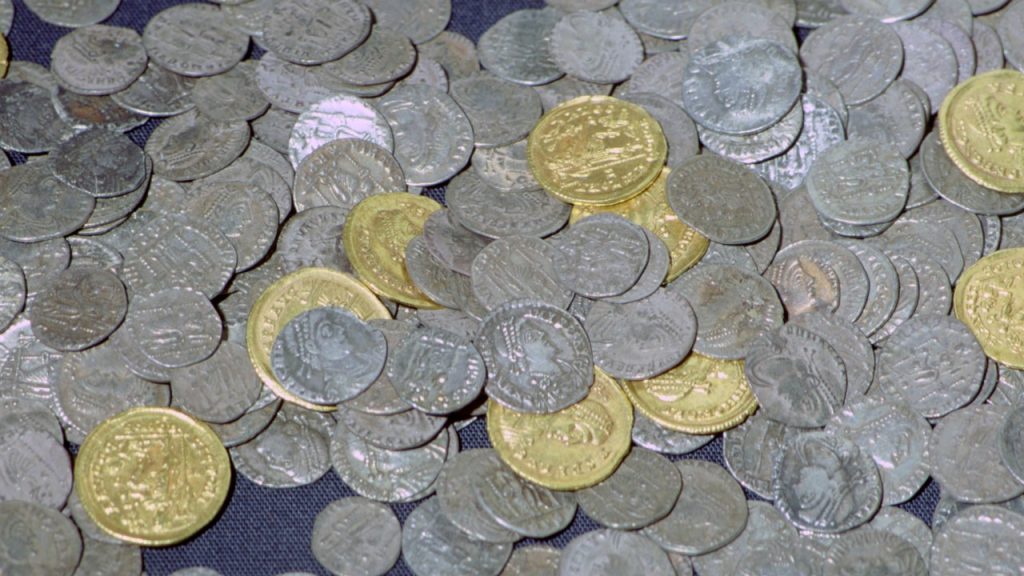The Hoxne Hoard, a collection of Roman treasures found in Britain, is noted as the largest hoard of Roman treasure ever found in the country. The hoard consists mainly of gold and silver coins, along with other objects such as tableware and jewelry. Discovered accidentally in 1992 by metal detectorist Eric Lawes while he was searching for a lost hammer in a field in Hoxne village, the hoard contains around 15,000 Roman coins and weighs approximately 60 pounds. Lawes was awarded £1.75 million for his find, which he shared with the farmer who owned the land where the treasures were discovered.
The Staffordshire Hoard is another large collection of Roman artifacts, containing 4,000 items, making it the largest collection of its kind in history. The hoard is made up of various gold and silver artifacts, including coins, as well as unique pieces of jewelry such as a body chain, necklaces, rings, and bracelets. The items were buried in the 5th century A.D. and some of them are on display at the British Museum today. The hoard was discovered by Lawes, who found a small portion of it while scanning the area with his metal detector, leading to the proper excavation of the site by the Suffolk County Council Archaeology Service.
One of the well-known treasures found in the Hoxne Hoard is the “Empress” pepper pot, one of the four found at the site. The pot is intricately crafted to represent a woman, adding to the uniqueness of the hoard. Additionally, the hoard contains various tableware items, including 19 spoons decorated with marine themes. Archaeologists believe that the hoard was buried no later than 450 A.D., during a period of uncertainty in the western Roman Empire when Roman soldiers were exiting Britain, leaving citizens to fend for themselves.
Experts have proposed several hypotheses regarding why the hoard was buried, with one common suggestion being for protection with the intention of retrieving the items at a later date. However, in the case of the Hoxne Hoard, the items were never reclaimed by their owners. Today, the hoard is on display at the British Museum in London, showcasing a selection of the coins, jewelry, and tableware. The display also includes Lawes’ hammer, the item he was originally searching for when he discovered the hoard, adding an intriguing layer to the story of the find. The unique nature of the Hoxne Hoard, both in its composition and how it was found, makes it a significant archaeological discovery in Britain.













